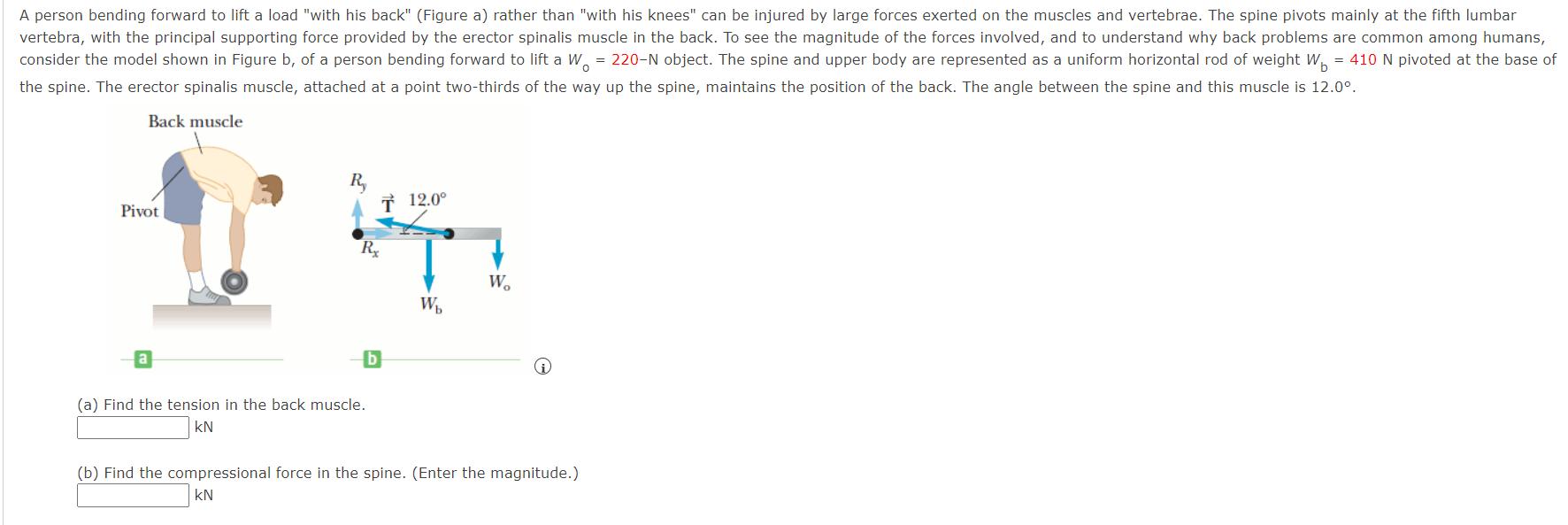Answered step by step
Verified Expert Solution
Question
1 Approved Answer
A person bending forward to lift a load with his back (Figure a) rather than with his knees can be injured by large forces

A person bending forward to lift a load "with his back" (Figure a) rather than "with his knees" can be injured by large forces exerted on the muscles and vertebrae. The spine pivots mainly at the fifth lumbar vertebra, with the principal supporting force provided by the erector spinalis muscle in the back. To see the magnitude of the forces involved, and to understand why back problems are common among humans, consider the model shown in Figure b, of a person bending forward to lift a W = 220-N object. The spine and upper body are represented as a uniform horizontal rod of weight W = 410 N pivoted at the base of the spine. The erector spinalis muscle, attached at a point two-thirds of the way up the spine, maintains the position of the back. The angle between the spine and this muscle is 12.0. Back muscle Pivot R Rx (a) Find the tension in the back muscle. kN T 12.0 b W W (b) Find the compressional force in the spine. (Enter the magnitude.) kN
Step by Step Solution
★★★★★
3.56 Rating (153 Votes )
There are 3 Steps involved in it
Step: 1

Get Instant Access to Expert-Tailored Solutions
See step-by-step solutions with expert insights and AI powered tools for academic success
Step: 2

Step: 3

Ace Your Homework with AI
Get the answers you need in no time with our AI-driven, step-by-step assistance
Get Started


